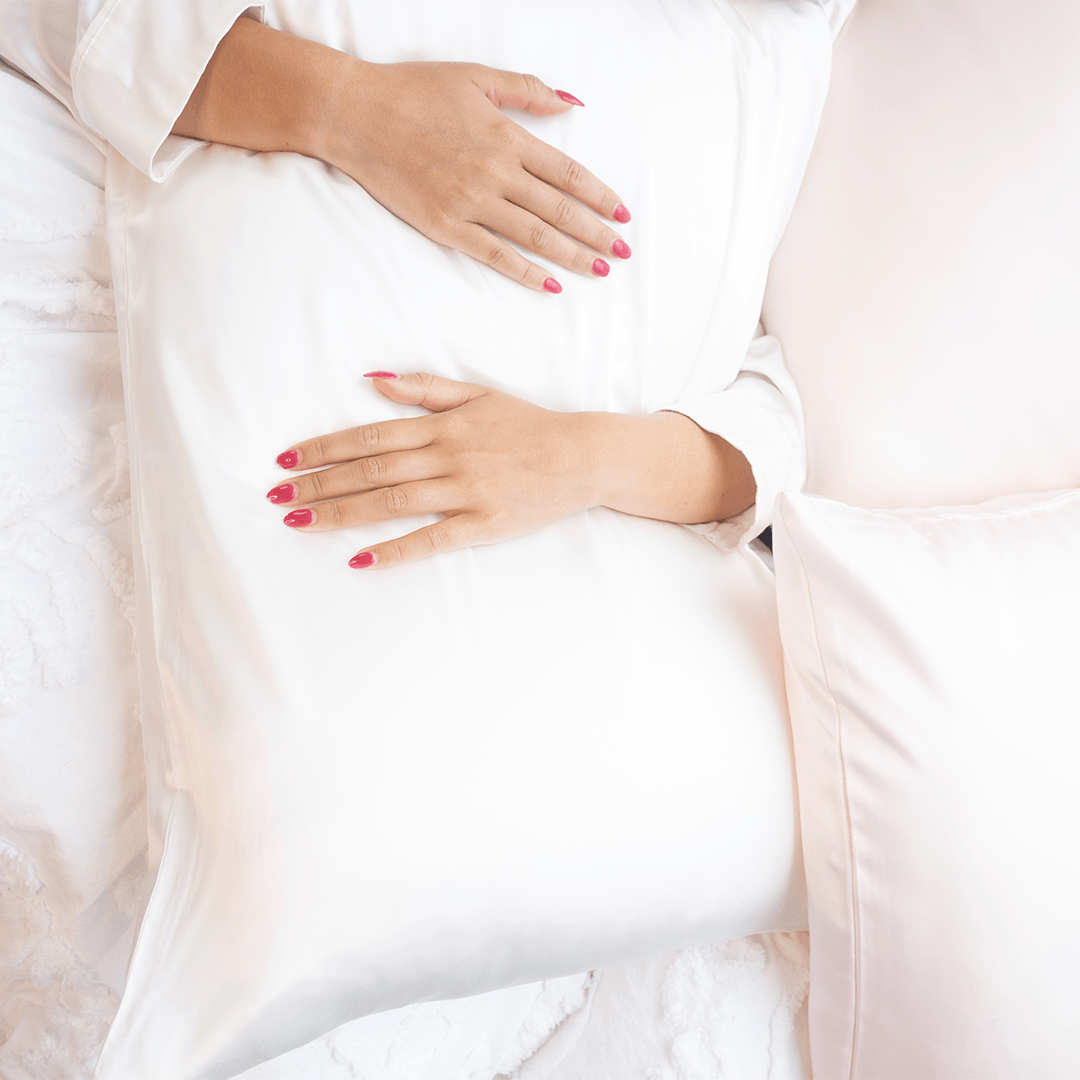The Difference Between Silk and Satin Pillowcases
As the benefits of sleeping on silk become more widespread, I think we can all agree to leave our cotton pillowcases behind in 2020 with all the other unpleasantries. Now that silk is seen as undeniably superior to cotton, the conversation has switched to a new question: silk or satin? While silk and satin are both better alternatives to cotton, there are still differences.
How It's Made
There is a big misconception about what satin actually is. Satin is a type of weave used to create fabric with a lustrous and glossy shine. However, when people talk about satin, they are often referring to satin weaves using polyester or other synthetic materials. Silk also uses a satin weave, however, is woven with a natural fibre produced by silk worms, making it high quality and luxuriously soft.
How It Feels
Both mulberry silk and polyester satin are known their smooth texture, however there is a difference. Satin has been referred to as being slippery while silk is buttery soft. Because polyester satin is made from plastic, it can feel more course and brittle. A single thread of silk is approximately 1/10 the width of a human hair strand, which means these tightly woven silk threads make silk light and soft.
Because silk is a natural fibre, it has all these natural properties that work to benefit you, which man-made synthetic materials like satin cannot.
How It Impacts The Environment
Because silk is a natural fibre, silk pillowcases are actually biodegradable. This means that once the pillowcase has reached the end of its product life, it can be put in the compost and will return to the earth. Alternatively, polyester satin is a synthetic plastic and cannot be composted or recycled. Polyester also requires more than double the energy than cotton to produce and uses harmful chemicals in production that filters into the air and water.
How It Helps
The most important thing to consider when choosing between silk and satin are the benefits. While both fabrics offer great benefits, you’ll notice the difference more with silk. Silk is great for your hair and skin by keeping it hydrated and the amino acids in silk fibres can help replenish lost collagen in the skin. Silk is also adaptable to its environment and can help regulate your temperature by keeping you cool in the summer and hot in the winter. Because silk is a natural fibre, it has all these natural properties that work to benefit you, which man-made synthetic materials like satin cannot.
How Much It Costs
The most obvious difference between silk and polyester satin that most people are drawn to is the price. Satin is a fair bit cheaper than silk and can be a great alternative for people who cannot afford silk. However, you pay for what you get. Satin is mass produced quickly and cheaply and will not provide the same benefits that silk does nor does it have the same lustre and shine. Opting for cheaper satin may seem advantageous initially, but you will regret not enjoying the benefits of silk in the long run.
Author: Brittany Nash



